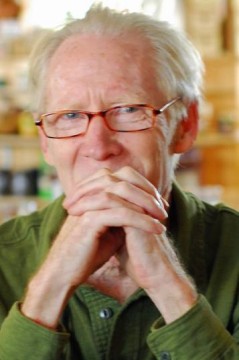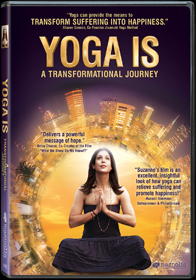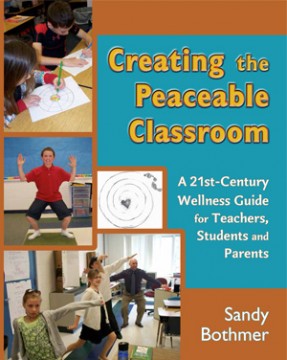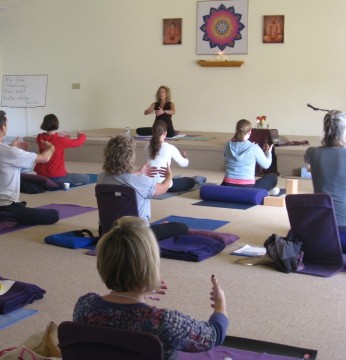 It’s been too long in the dark and cold of winter for many of us, but the wisteria is blooming in the cold Northeast, and there is more than just the promise of spring. Chanting the Gayatri mantra or singing “Rise and Shine” or “Let the Sun Shine In” or “This Little Light of Mine” in any season, can bring a sense of light to the darkest corners of our hearts and minds. Consider beginning your day with a chant or a song in the shower, in the car, or on your yoga mat.
It’s been too long in the dark and cold of winter for many of us, but the wisteria is blooming in the cold Northeast, and there is more than just the promise of spring. Chanting the Gayatri mantra or singing “Rise and Shine” or “Let the Sun Shine In” or “This Little Light of Mine” in any season, can bring a sense of light to the darkest corners of our hearts and minds. Consider beginning your day with a chant or a song in the shower, in the car, or on your yoga mat.
A deep and heartfelt prayer of gratitude goes out to Mukunda Tom Stiles, who left his body February 18th. He gave us so much and left us too soon. But every morning, when I put my stubborn SI Joint back in balance, using his hip rocks, I feel our unbroken connection. He is with us, not only through his books and his teachings, but through the love he shared. He smiles on. I send blessings of peace to his beloved Chinnamasta, as she continues his work in the world. Please read Chinnamasta’s beautiful tribute to Mukunda’s life and work below.
This issue features reviews on new studies on the effects of yoga on your brain, the benefits of yoga for women recovering from breast cancer, a review of a new film that asks the deeper questions and features celebrity yoga teachers, and a review of a new book for educators and parents that uses yoga-based practices and philosophy to support children’s growth and development into compassionate and self-aware human beings.
I hope to see you on the path. Join me for our live webinar series beginning April 16th!
Tribute: Remembering Mukunda Tom Stiles 2/24/49 – 2/18/2014

Mukunda Stiles had a profound connection to the Divine Mother. Through her radiance, he touched every person he came in contact with – be it his mother, a student seeking his guidance, or a stranger on the street. He met each one right where they were in the moment, and by listening completely, without judgment and without attachment, each one felt loved, honored and respected. When they parted, they were transformed.
Mukunda’s spiritual journey started when he was enrolled at West Point Military Academy. That’s when he had his first awakening that changed the course of his life. He decided to dedicate himself to the yogic path, teaching and being of
service.
Mukunda was deeply impacted throughout his life by the guidance of his guru Baba Muktananda. The first time they met, Muktananda looked him straight in the eyes and initiated him into Shakipat. Spirit was ignited within and his life was never the same. It was Baba Muktananda who later gave him his name, which means ‘compassionate liberator’. Swami Prakashananda became his spiritual teacher conveying the Divine Mother’s subtle and profound experiences to Mukunda. That presence resonated deep within and the formless Mother would reveal herself to him, up to the very last breath he took.
In his twenties, Mukunda’s spiritual focus was on Patanjali’s Yoga Sutras, the subject of his college thesis. For the next 30 years he continued to study these sutras, seeing the world more deeply through the eyes of Patanjali. That darshan led to experiences and insights on how yoga could alleviate suffering and lead to transformation in all yogic body layers. In 2003 he published his first book, a poetic Bhakti rendition of theYoga Sutras of Patanjali. Mukunda’s ongoing contemplation on Patanjali’s darshan provided the foundation for his development of Structural Yoga Therapy (SYT) – the practice and his second book. He was invited to conduct workshops around the world, training hundreds of future structural yoga therapists in America, Europe, and Asia.
Mukunda was considered internationally to be a Master Yogi. He was deeply respected and revered by seekers, colleagues and swamis from diverse lineages. He stood out in their view because to him lineage was not what mattered. Mukunda never pushed his beliefs or convictions. He was here to serve, share his teachings, experience and insights. He embraced all.
Mukunda studied with renowned teachers in Yoga and Ayurveda, training with Indra Devi, B. K. S. Iyengar, Rama Jyoti Vernon, Dr. Vasant Lad, David Frawley and Robert Svoboda. He was the first graduate of the Institute for Yoga Teacher Education, the first professional yoga school, in 1976. In 1995 he and Rama Jyoti Vernon co-founded the American Yoga College. Mukunda was on the staff of the Siddha Yoga ashram in Boston (SYDA), the Rocky Mountain Institute for Yoga and Ayurveda and the International Ayurvedic Institute (IAI). He also taught at the Mind, Body Medical Institute headed by Herbert Bensen, MD and Joan Borysenko.
Mukunda wrote two other books: Ayurvedic Yoga Therapy and Tantra Yoga Secrets. Through his writing he shared his insights and experiences into the secrets of the Yoga, Tantra and Ayurveda trilogy. With each successive book his teachings deepened, taking seekers to unexpected levels of knowing, revealing the layers of the koshas. Mukunda was the living embodiment of these teachings.
Baba Muktananda considered The Supreme Yoga of Vasistha to be the highest spiritual text to help seekers toward enlightenment. This text became daily nourishment for Mukunda and his consort and wife Chinnamasta. The profound darshan of Vasistha would come alive to them, leading to spontaneously arising bliss.
The first time Mukunda looked Chinnamasta in the eyes he said, “Finally you have come.” They spontaneously merged as if they had always been One. Vasistha became their teacher, giving them spiritual food to share, as they became each other’s teachers.
The last five years of Mukunda’s life were the most fulfilling, both worldly and spiritually, the most complete, living a consort relationship and effortlessly serving the community together with his Devi. As asked, Chinnamasta will share his teachings and legacy with those who are willing to step into profound transformation, just as they had done teaching together sitting side-by-side.
Chinnamasta held her Beloved Deva in her arms in their home, surrounding him in unconditional love beyond his last breath on February 18th. He was complete.
Om Tat Sat
Research: Yoga Changes Your Brain
The best evidence to date, establishing the benefits to the brain of yoga practice, has been reported by scientists at the National Center for Complementary & Alternative Medicine (NCCAM) in Bethesda, MD. Using brain imaging technology, Chantel Villemure and her colleagues found more grey matter in several important brain regions that regulate self-awareness and emotion in yoga practitioners as compared to non-yoga practitioners. Specifically, areas that increase pain tolerance, self-awareness, and regions that regulate emotion and direct attention were found to be enlarged. In fact, more hours of practice per week correlates to a larger effect on the brain.
Although the main point of investigation was the yoga practitioner’s greater tolerance to pain, to my mind, one of the most exciting discoveries, reported by the authors at a recent Neuroscience meeting, was the increased size of the hippocampus, which is the part of the limbic brain region that is responsible for memory. When we’ve been traumatized and have not found treatment, the increased hyper-arousal we experience, along with the brain chemical bath of stress hormones like cortisol, has been found to shrink the hippocampus. Memories are often fragmented and fraught with emotion. The increase in the hippocampus as well as the increase in other areas of the brain that affect self-awareness like the somatosensory cortex as superior parietal cortex are the first brain (as opposed to behavioral) indications that yoga may be a first line treatment for post-traumatic stress disorder (PTSD).
In the study published in Cerebral Cortex, the researchers report that North American yogis tolerated pain more than twice as long as individually matched controls and had more gray matter (GM) in multiple brain regions. “Yogis, as opposed to controls, used cognitive strategies involving parasympathetic activation and interoceptive awareness to tolerate pain, which could have led to use-dependent hypertrophy [enlargement] of insular cortex. Together, these findings suggest that regular and long-term yoga practice improves pain tolerance in typical North Americans by teaching different ways to deal with sensory inputs and the potential emotional reactions attached to those inputs leading to a change in insular brain anatomy and connectivity.”
To read the full study please click here.
• Villemure, C., Bushnell, C. Annual Meeting of Society for Neuroscience, November, 2013
• Villemure C1, Ceko M, Cotton VA, Bushnell MC, “Insular Cortex Mediates Increased Pain Tolerance in Yoga Practitioners.” Cerebral Cortex. 2013 May 21.
Research: Yoga Offers Long Term Benefits to Women with Breast Cancer
Reviewed by Susan Tebb, Ph.D., L.S.W., RYT-200, LFYP-2. LifeForce Yoga Director of Research, professor, Dean/Director Emeritus School of Social Work Saint Louis University
Two studies recently used some of the same outcome measures to look at yoga’s effect on women all diagnosed at similar stages of breast cancer, but at different points in their treatment. The group at MD Anderson were undergoing radiotherapy while the group in Ohio were at least two months post treatment. Both studies ended up with over 150 women involved in a randomly selected yoga practice or a waiting list; both trials offered yoga to the wait list at the end of the studies. The group in Texas also had a comparison group where they were given stretching exercises that approximated the gross movements of the yoga asansas. The outcome measures used by both were Medical Outcomes Study, an overall quality of life scale; Pittsburgh Sleep Quality Index; and CES-D, measuring depression. The two studies also looked at fatigue but used different indexes. In addition, MD Anderson, under the direction of Lorenzo Cohen, looked at cortisol levels, noting that other studies had found a correlation between levels of cortisol and survival rates. The Ohio study led by Kiecolt-Glaser, assessed the frequency and duration of yoga on inflammation, mood, food consumption and fatigue.
The yoga protocol differed in both studies, the Texas participants attended three, hour-long yoga classes every week for six weeks during their radiotherapy. The yoga offered was developed by Vivkananda Yoga Ansasndhana Samsthana with an active mind-body approach specifically for those with cancer. Although the yoga protocol was not specifically described in the published study, one can assume it included pranayama breathing and relaxation, as the stretching group only included asana-like physical movements. Yoga sessions accommodated women’s schedules, often resulting in a one-on-one session. For home practice between scheduled sessions, each participant was given a written manual and an audio CD to follow. The data was collected at baseline, end of treatment and one, three and six months out.
The Ohio group practiced a hatha style yoga that was tailored to participants’ needs for twelve weeks, 90 minutes twice a week. All teachers followed a protocol designed by Marcia Miller of Yoga on High for breast cancer survivors. The protocol is shared in the article and consists of active asanas beginning on the floor then moving to standing, seated, restorative poses and then ending with breathing practices. Both studies encouraged home practice between the organized sessions and the Ohio group were asked to keep track of their practice in weekly logs. The Kiecolt-Glaser Ohio group took data at baseline, post 12 week yoga sessions and then three months later.
The results at MD Anderson across the three groups found no differences for mental health and sleep issues but the women in the yoga group had the greatest reduction in the stress hormone cortisol. The yoga and stretching groups noted less fatigue and the yoga group had greater physical functioning. Other studies have shown that physical exercise lessens fatigue and increases quality of life with cancer patients. This study further supported the benefits of engaging in some type of exercise as a cancer patient and yoga offers physical movement, relaxation and breath work to calm the mind and body.
While the MD Anderson study emphasized physical activity benefitting those undergoing breast cancer treatment, the Ohio group found that “chronic inflammation may fuel declines in physical function leading to frailty and disability” and yoga helped to lower fatigue and inflammation for these women post treatment. Better sleep hygiene helped in lowering the inflammation. Regular exercise has been found to lower fatigue, which has a direct effect of inflammation. The yoga group in Ohio, on the average, between their scheduled class and home session practiced almost 25 minutes each day over the twelve week period. As the average of daily practice time increased, fatigue lessened and
inflammation was reduced.
Both these studies help to support that an active physical routine can help as one heals from breast cancer; yoga was selected in both studies because it can be individualized and has other aspects besides the physical activity, such as, breath work, relaxation, meditation, stretching and strengthening . Many of the benefits of yoga to the women in these studies were less fatigue, less depression, better physical functioning, which made for an over-all improved quality of life.
To read the Ohio study please click here, and to read the MD Anderson study click here.
Chandwani, K.D., Perkins, G., Nagendra, H.R., Raghuram, N.V., Spelman, A., Nagarathna, R., Johnson, K., Fortier, A., Arun, B., Wei, Q., Kirschbaum, C., Haddad, R., Morris, G.S., Scheetz, J., Chaoul, A., Cohen, L. (2014). Randomized, controlled trial of yoga in women with breast cancer undergoing radiotherapy. Journal of Clinical Oncology. 32. doi: 10.1200/JCO.2012.48.2752
Kiecolt-Glaser, J.K., Bennett, J.M., Andridge, R., Peng, J., Shapiro, C.L., Malarkey, W.B., Emery, C.F., Layman, R., Mrozek, E.E., & Glaser, R. (2014). Yoga’s impact on inflammation, mood, and fatigue in breast cancer survivors: A randomized controlled trial. Journal of Clinical Oncology, 32. doi:10.1200/JCO.2013.51.8860
Review: Yoga Is, A Film about the Transformational Power of Yoga  by Suzanne Bryant
by Suzanne Bryant
Reviewed by Deborah Lubetkin, Psy.D. , RYT-200, LFYP 2 & Mentor
Suzanne Bryant’s documentary weaves the journey of a journalist and yoga practitioner, as she explores the wonders of yoga after finding out that her beloved mother was diagnosed with terminal cancer. Overwhelmed by the grief of her impending loss, Suzanne leaves her life in New York for California to spend more time with her mother during the last moments of her life. With a background in journalism, Suzanne decides to travel the world to explore the mysteries of yoga’s healing effects on mind, body, and spirit, trying to fill and understand the void of her grief…and how to heal this profound loss. Her journey begins in Los Angeles as she spends time with her mother, and later after her mother’s passing continues to India. “When the forces of change appear in our lives, how do we face our truth?” This is this inquiry of the film, and of course, the inquiry of yoga. Featuring many well-known yogis, including Seane Corn, Sharon Gannon, David Life, Baron Baptiste, Dharma Mittra, Shiva Rea, Gurmukh, Krishna Das, and others, the film explores numerous dimensions of yoga in very meaningful and thoughtful interchanges with senior teachers. Inquiries explored include Love, Truth, Happiness, Connection, Empowerment, Karma, Enlightenment and more. As each section of the film progresses, we hear from master yoga teachers and gurus about their particular view of each of these dimensions. The film is a beautiful reminder of the power of yoga to help us transform suffering and rediscover an inner light and peace after dark times. For both beginning yogis seeking to understand the process of their budding practice, as well as for seasoned practitioners and teachers, this is a lovely video that provokes the self-inquiry of “what is yoga to me?” I fully enjoyed the journey.
One minor caveat in an otherwise thoughtful film– It is unfortunate that the pioneering work of Amy Weintraub and her application of yoga to treat mood disorders such as anxiety, depression, trauma, and loss was not included in this film. Both the filmmaker herself, as well as many others watching the film would have been well-served if the compassionate approach of Lifeforce Yoga had been included in this inspiring documentary.
To purchase a copy of this film, please click here.
Review: Creating the Peaceable Classroom: A 21st-Century Wellness Guide for Teachers, Students and Parents by Sandy Bothmer
for Teachers, Students and Parents by Sandy Bothmer
Review by Ellen Campbell. Ellen teaches yoga to children and adults in Tucson, Arizona. She is a LifeForceYoga Level I practitioner and author of the Youthful Yogis Blog.
I had just one regret after reading Sandy Bothmer’s book, Creating the Peaceable Classroom: a 21st Century Wellness Guide for Teachers, Students and Parents, and that was that I did not have Ms. Bothmer as a teacher when I was in elementary school!
Creating the Peaceable Classroom is an insightful work that offers practical suggestions and techniques for creating an “inner climate of calm and vitality” at home, at work, and in the classroom. As an experienced yoga therapist, Sandy offers private mentoring for teachers and presents Peaceable Classroom workshops for teachers, para-professionals, and administrators at schools and educational conferences. In her private yoga therapy practice, she works with adults and children on the autistic spectrum, with ADHD, and anxiety issues. But it is Bothmer’s twenty years of experience as a classroom teacher that pulsates through every page of this thorough and inspiring book; her tone is compassionate and her understanding of the nuts and bolts of a classroom setting is profound.
Creating the Peaceable Classroom offers an impressive array of tools for creating calm and useful energy, including yoga, qigong, feng shui, breath work, centering exercises and mandala making, just to name a few. The beauty of Bothmer’s writing is that readers never feel overwhelmed; indeed, the author’s very wise advice is that we “start small”, trying out a variety of strategies with the aim of eventually creating a “menu of techniques” that will nurture peace, both inside and out.
Creating the Peaceable Classroom is divided into three parts, beginning with tips for the design of a supportive classroom environment. We are introduced to the ancient practice of feng shui in which every element of a room—from the plants to the furniture to the way supplies are stored—affects the vitality and energy flow of the setting. The author suggests strategies to balance yin (quiet) and yang (active) energy, and provides reproducible “adjustment charts” to further assist readers in creating peace and harmony in both home and classroom situations.
Part two of Creating the Peaceable Classroom is written for teachers. To be honest, it reminded me of the safety protocol on airplanes, “in the unlikely event of an emergency” we are reminded to take care of our own needs before attending to the needs of our children! Sandy Bothmer recognizes that stress and fatigue can prevent teachers from doing their best work. She also understands the time and space constraints of a classroom setting. Beginning with the breath, Bothmer lays out simple techniques to soothe the nervous system, revitalize the body and quiet the mind. Readers will appreciate the thoughtful descriptions of stress-reducing practices like alternate nostril breathing and Dirga pranayama (three part yogic breath), as well as invigorating techniques such as “Dragon’s Breath” and Breath of Fire. This is followed by an overview of meditation, including information on posture, mudras and mindfulness walking. Readers are reminded that “the intention you bring to your meditation is more important than the amount of time you sit,” which comes as welcome news to teachers who may only have five to ten minutes to cultivate a state of inner stillness!
Yoga poses, qigong exercises, aromatherapy, acupressure and Reiki are also covered in the section of Creating the Peaceable Classroom devoted to teachers. To reiterate, the author presents this information in a way that does not inundate or overwhelm the reader. The practices described by Bothmer can easily be incorporated into a busy day: work clothes are fine and none of the techniques demand a great deal of time or space.
Part Three of Creating the Peaceable Classroom focuses on children. We learn ways to tap into the “emotional temperature” of a classroom and from there discover techniques that children can use to relax, re-energize or center themselves. Bothmer is careful to point out age appropriate distinctions, such as the fact that children younger than eight may not be physically ready for structured breathing exercises. She also offers suggestions for special education teachers and includes a “parent connection” in each chapter to support taking specific techniques into the home.
Creating the Peaceable Classroom offers a number of yoga activities for kids that I am certain adults will want to try, too! Bothmer shares many other strategies to help children become more centered and self-aware: guided visualizations (several visualizations are written out and can be read directly to students or used as inspiration for a more personal script); calming movement activities such as “partner mirroring” and “mindfulness walking”; and energizing movement activities such as “Jelly Jiggles” and “the Swings”, both inspired by qigong.
A section of Creating the Peaceable Classroom that I particularly enjoyed was in chapter eleven titled: “Centering.” Readers are treated to a thoughtful description of mandalas, with a reminder that “these visual representations can bring one back to his or her own wholeness or place of inner calm.” The author provides templates for making mandalas in the classroom; she also offers helpful tips such as keeping a file of laminated mandalas available for use during class-quieting sessions. This segment of the book provides teachers with an “art extension”, one of several Bothmer includes to help bring art activities into the classroom.
There is so much more to explore in Creating the Peaceable Classroom: spirals and labyrinths to balance the hemispheres of the brain and to help children transition through challenging emotions, affirmations and musical suggestions to soothe or energize the senses. Creating the Peaceable Classroom also provides readers with a rich resource list of books, music and materials as well as a convenient reference directory.
Each time I open Sandy Bothmer’s book, I find new and inspiring information. Although I did not have the good fortune of having Sandy as a teacher, I want to thank her for all the youthful hearts she has touched over the years. In her work as a teacher, an author and now through her organization, Peaceable Pathways, Bothmer continues to reach out. She generously shares her knowledge with parents, teachers and administrators, including those in the community of Newton, CT. whose K-6th grade teachers received copies of Creating a Peaceable Classroom shortly after tragedy struck in December, 2012. Through Bothmer’s work, we can all learn to cultivate an inner climate of calm. And in so doing we can establish harmony in our homes, our communities and in our schools.
You can learn more about Sandy Bothmer’s work and see video clips of techniques from her book at www.peaceablepathways.com.
News: Online Workshop Open to All begins April 16th!
Weekly beginning April 16th – May 28th we will be offering Why & How LifeForce Yoga for Mood Management Works: Education, Empowerment and Deepening Your Practice with Amy Weintraub – $199
Open to anyone who wants to deepen their yoga practice and learn additional mantras, mudra, pranayama and more. You do not need to be a yoga teacher to take this course.
Learn about why and how LifeForce Yoga is good for trauma, depression, anxiety and mood disorders. Learn additional pranayama techniques, mantras and mudras. Learn about the neuroscience behind these practices.
Course can be taken for credit as Module B of the Modular LifeForce Yoga Practitioner Certification. Module B can be taken prior to Module A. Learn more!
Events: Upcoming LifeForce Yoga Practitioner Trainings
We have two upcoming LifeForce Yoga Practitioner Trainings!
April 4-11, 2014 at Yogaville in Buckingham, VA & July 6-13, 2014 at Kripalu in Stockbridge, MA
This is a certification training for yoga teachers and health professionals. Learn and practice simple Yoga tools to empower your clients and students to manage their moods. Amy will be assisted by LifeForce Yoga Practitioners, both Yoga and mental health professionals. CEUs for mental health professionals and yoga teachers. To learn more and to register online visit: yogafordepression.com/practitioner-training/
Events Calendar
To attend a LifeForce Yoga Workshop near you, visit our Events Calendar!